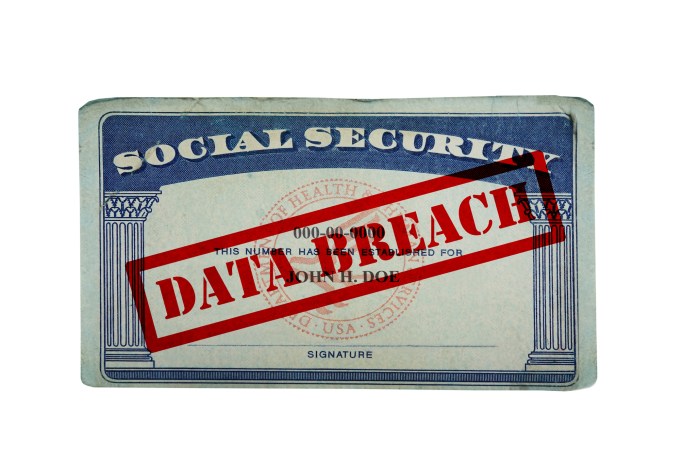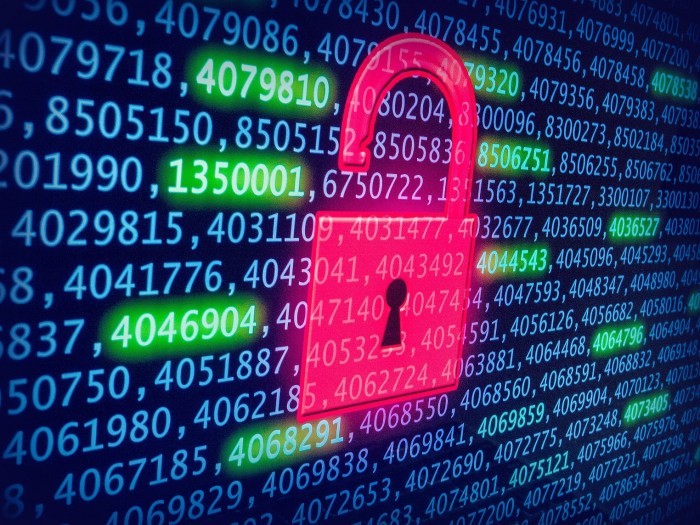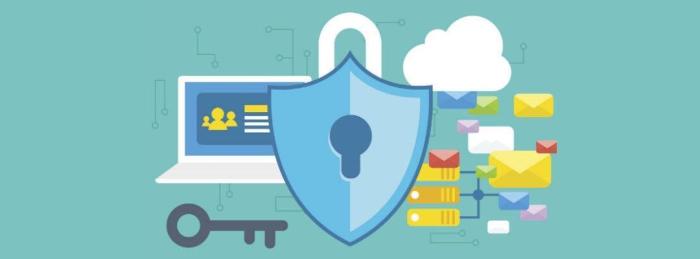Data breach social security – Data breaches involving social security numbers pose significant threats to individuals and organizations. This article delves into the causes, consequences, prevention strategies, and legal implications of such breaches, empowering readers with knowledge to safeguard their sensitive information.
Understanding the risks and taking proactive measures are crucial to mitigate the impact of data breaches and protect personal and financial well-being.
Data Breach Causes and Consequences
Data breaches involving social security numbers (SSNs) have become increasingly common, with devastating consequences for individuals and organizations alike. Understanding the causes and potential impact of these breaches is crucial for effective prevention and mitigation strategies.
Common Causes of Data Breaches Involving SSNs
- Hacking and unauthorized access
- Malware and phishing attacks
- Insider threats
- Lost or stolen devices
- Human error
Potential Consequences of Data Breaches Involving SSNs
- Identity theft and financial fraud
- Medical identity theft
- Social engineering attacks
- Reputational damage for organizations
- Legal liabilities and fines
- Implement strong encryption measures
- Establish strict access controls and user authentication
- Regularly update and patch software and systems
- Conduct security audits and vulnerability assessments
- Educate and train employees on data security best practices
- Social Security Act
- Health Insurance Portability and Accountability Act (HIPAA)
- Payment Card Industry Data Security Standard (PCI DSS)
- State and federal privacy laws
- Monitor credit reports regularly
- Set up fraud alerts with credit bureaus
- Use strong passwords and enable two-factor authentication
- Be cautious about sharing personal information online
- Report any suspicious activity immediately
- Notify affected individuals and relevant authorities promptly
- Contain the breach and prevent further data loss
- Conduct a thorough investigation to determine the scope and cause of the breach
- Implement measures to prevent similar breaches in the future
- Provide support and assistance to affected individuals
- Stay informed about data breach news and best practices
- Use strong passwords and enable two-factor authentication
- Be cautious about sharing personal information online
- Monitor credit reports and financial statements regularly
- Report any suspicious activity immediately
Prevention and Mitigation Strategies
Preventing data breaches involving SSNs requires a comprehensive approach that includes best practices for data protection, access controls, and employee training.
Best Practices for Preventing Data Breaches

Role of Data Encryption, Access Controls, and Employee Training
Data encryption safeguards sensitive information by rendering it unreadable without the appropriate key. Access controls limit who can access and modify data, while employee training empowers employees to recognize and prevent security threats.
Regulatory Compliance and Legal Implications
Protecting SSNs is a legal requirement, and organizations must comply with various regulations and laws. Failure to do so can result in penalties and liabilities.
Legal and Regulatory Requirements

Penalties and Liabilities
Violations of data protection laws can lead to civil penalties, fines, and even criminal charges. Organizations may also face lawsuits from individuals whose SSNs have been compromised.
Identity Theft and Fraud Prevention
Data breaches can provide criminals with the information they need to commit identity theft and financial fraud. Understanding the risks and taking steps to protect oneself is crucial.
How Data Breaches Lead to Identity Theft and Fraud
SSNs are valuable for identity thieves as they can be used to open fraudulent accounts, obtain credit, and access personal information.
Protecting Oneself from Identity Theft and Fraud
Data Breach Response and Recovery
In the event of a data breach involving SSNs, prompt and effective response is essential to mitigate damage and protect individuals.
Steps to Take in the Event of a Data Breach, Data breach social security

Importance of Timely Notification, Containment, and Recovery Efforts
Timely notification allows affected individuals to take steps to protect themselves, while containment measures prevent further damage. Recovery efforts ensure that the organization learns from the breach and implements measures to prevent future occurrences.
Public Awareness and Education: Data Breach Social Security
Raising public awareness about the risks of data breaches involving SSNs is crucial for protecting individuals and organizations.
Importance of Public Awareness
Educated individuals are more likely to recognize and prevent data breaches, protecting their own information and that of their employers.
Tips for Staying Informed and Protecting Sensitive Information
Final Review
Data breaches involving social security numbers are a serious concern that requires vigilance and proactive measures. By understanding the causes, consequences, and prevention strategies Artikeld in this article, individuals and organizations can safeguard their sensitive information and minimize the risks associated with data breaches.
Clarifying Questions
What are the most common causes of data breaches involving social security numbers?
Common causes include hacking, phishing attacks, malware infections, and insider threats.
What are the potential consequences of a data breach involving social security numbers?
Consequences can include identity theft, financial fraud, and damage to reputation.
What are some best practices for preventing data breaches related to social security numbers?
Best practices include data encryption, access controls, employee training, and regular security audits.